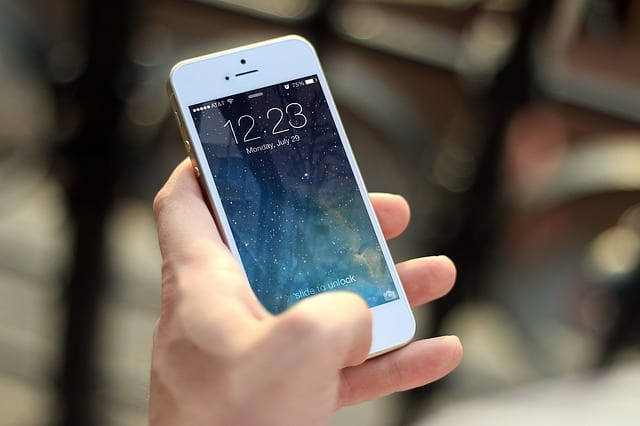Gone are the days when poor network reception only affected call quality. Today, being in a dead spot with no cell phone signal keeps you from receiving SMS and email or disconnects you from social media and the web. To call this dilemma annoying is an understatement, especially when you’re paying for a pricey mobile plan.
When you’re fed up sticking your hands outside windows and acting like an instant cell tower, read on to know six secrets to getting a better cell phone signal on your smartphone. This way, you won’t have to suffer a spotty service, dropped calls, long-loading apps, and poor voice quality all the time.
Seek the Nearest Cell Towers
Did you know that you can’t really trust the accuracy of the signal bars you see on your cell phone? The truth is that the mobile phone industry hasn’t come up with a standard to equate reception strength to bars up to this day. So don’t be surprised if a three signal bar on AT&T performs at equal speeds with two bars on Verizon and one bar on a Sprint phone even as they all receive equal signals. That signal bar icon you see? That’s only a subjective representation of how your carrier measures reception.
The only accurate and objective way to determine a network reception strength (in an area) is to measure cell phone signal. Measured in decibels (dB), these signals are radio waves that you can easily locate and read using your smartphone.
Before we tell you how to track the cell phone signal on your device, keep in mind that cellular devices operate within the standard -50 dB to -120 dB levels. By default, -50 dB signifies excellent reception while -120 dB is a dead spot. So as you walk around the house or office in search for good network reception, take note of the parts where the readings on your phone showed numbers closest to -50 dB. Those spots are where you can get the best signal from your chosen carrier.
To get dB readings on iPhone, here are the steps:
- Go into Phone mode
- Call *3001#12345#* to enter Field Test mode
- Drag down the notifications bar and locate the dB reading on the lower left corner
As for Android users, here’s how to find the dB readings:
- Settings > General
- Go to the ‘About Phone’ option > ‘Network’ or ‘Status’
- Look for the fluctuating dB values
Now, start walking around the premises to see the corners where you get the best signal!
Keep Away from Physical Obstructions
In the beginning, cell phones came with external antennas for better reception. Nowadays, this vital feature is tucked inside most handsets. Sure, phones look better without them but, this design compromised the antenna’s ability to pick up signals.
To help your phone get better reception, you have to reduce the amount of interference between nearby cell tower/s and your handset. To do this, here are easy-peasy tips you can do:
- Whenever possible, steer clear of any tall barriers like metal structures, trees, and skyscrapers.
- Stay away from insulated interiors and thick walls or get near an open window.
- When inside a building, go to higher floors or the rooftop.
Besides these, we recommend that you hold your phone upright. Hold it sideways (landscape position) and your hand may just block the antenna from reaching out with the cell tower.
Take Advantage of Wi-Fi Calling
When you’re in areas with a poor cell phone signal (e.g. underground subway stations, rural towns, etc.), you can harness the power of available Wi-Fi networks to make and receive phone calls instead of using mobile network reception.
Nevertheless, you can readily take advantage of this great feature right in your home! That is if you have a broadband internet with a Wi-Fi router in place already. Convenient, isn’t it?
Unfortunately, as of now, only Sprint and T-Mobile offer full Wi-Fi calling support. Meanwhile, Verizon and AT&T only support such a feature on selected handsets such as Samsung Galaxy S6 & later models and Apple iPhone 6 & later versions.
Maintain a Full Battery
A constant power supply is necessary for your phone to stay connected to a cell tower. Thus, if it’s out of juice, it may not be able to do that.
In case you’re waiting to receive a very important call or about to make one, conserve your battery as much as possible. Here are some quick ways to do this.
- Stay away from high temperatures (getting exposed to direct sunlight, for example).
- Turn off Bluetooth or Wi-Fi when they’re not in use.
- Close every unused app running in the background.
- Lower the screen’s brightness just enough for you to read the text.
Stay Away from Crowds
Sure, you love sharing selfies on social media or calling friends to come join you when you’re at a festival, concert, or a local sports event, but… did you know that it’ll be harder getting a good reception in crowded areas?
Think about it: you and everyone else in the crowd are competing for the cell phone signal to the cell tower and this doesn’t bode well for you. So if you’re itching to call your best friend to come and see your favorite band with you, find a less populated area before you dial him/her up.
When All Else Fails, Switch Carriers
If you’re still not getting better reception even after doing every one of our tips, your current carrier may be the problem. However, it’s wise to do this only when your phone is past its lock-in period or has been fully paid.
To begin with, go visit OpenSignal.com or download their app so you get a good idea of what network has the strongest cell phone signal in your location. Simply search using zip code and the website/app will show a comparison of network reception in the area.
Nevertheless, don’t just rely on the information you get here. Instead, exercise a bit of logic. If you live near an AT&T tower, you may have to decline Verizon’s offer of an extensive national 4G coverage. Or, if you mainly use your handset for calls and SMS more than mobile data, perhaps Sprint’s or T-Mobile’s cost-effective 3G plan would be better suited for your needs.
Remember that with carriers eager to get customers to switch, jumping ship ASAP might just fetch you tempting goodies like a heavily discounted smartphone or a lower bill!
The fact is that you’re not the only one having cell signal problems. That’s why you’ll see a lot of shady software on the market that promises to tweak your phone’s antenna to help improve your network reception. Sadly, there’s only so much that apps can do in this case.
In the end, you’ll have to rely on old-fashioned science, math, and logic to know how to get better phone reception.


